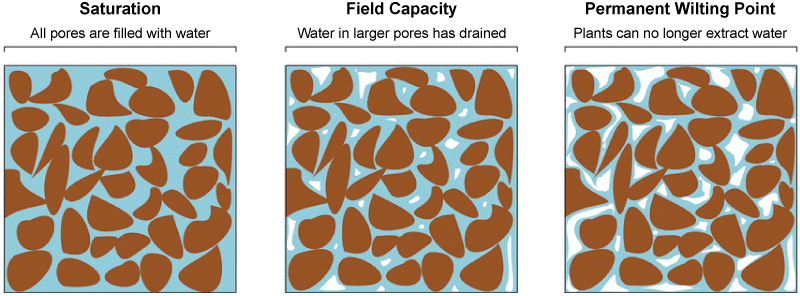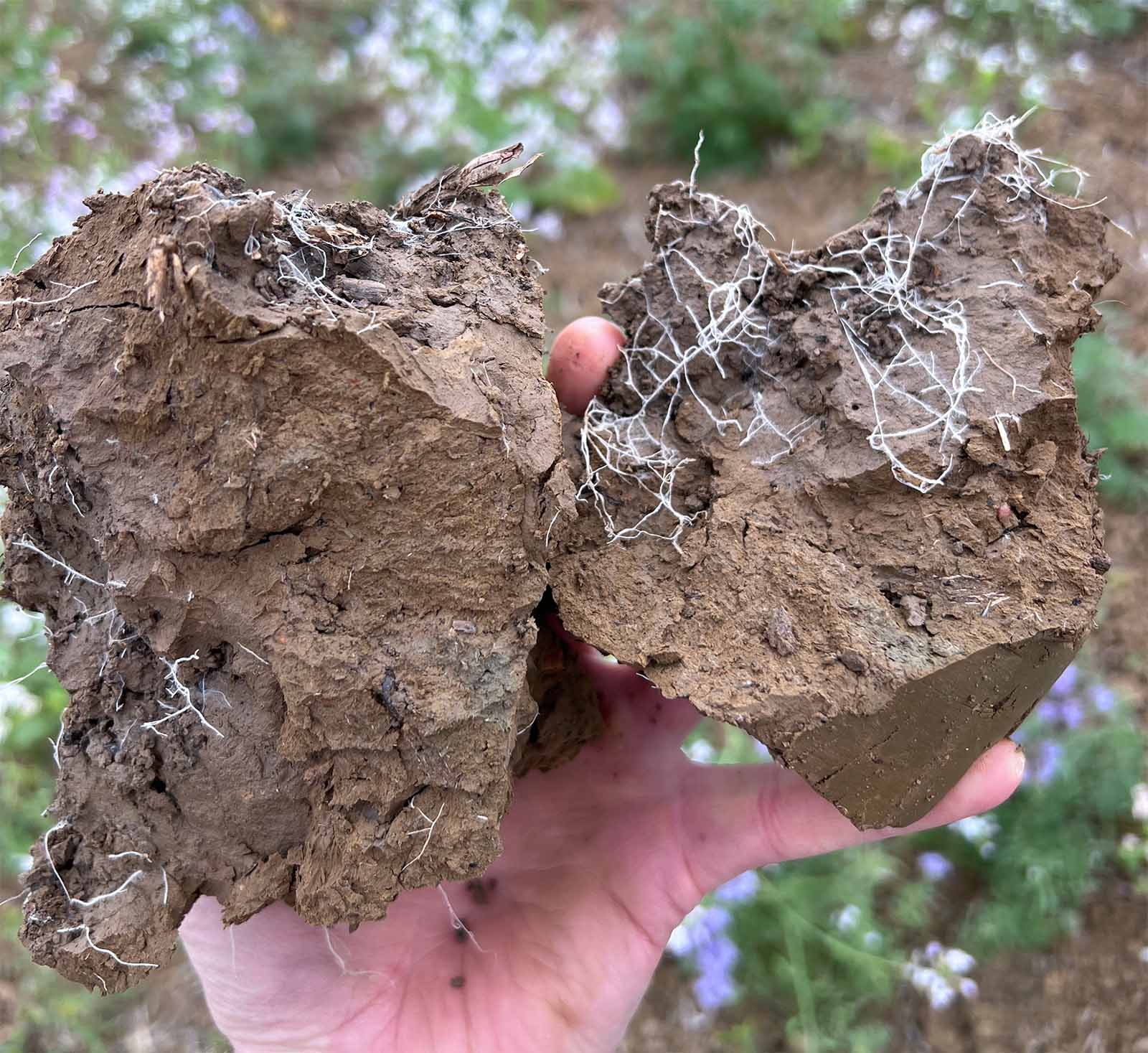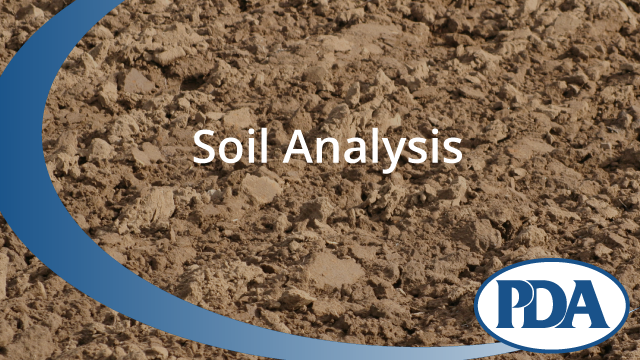Download pdf: Effective Soil Analysis (1.88M)
pdf 1.88M
Effective Soil Analysis
September 2024
Soils up and down the country appear to have taken quite a battering this year. The prolonged wet conditions experienced by many have led to soils being in their poorest state many have ever known, particularly heavier, higher clay content soils. Careful management will be required to ensure that the problems encountered this year do not carry over into the next. Soil structure is an important consideration when interpreting soil analysis. This newsletter focusses on some of these issues surrounding effective soil analysis.
Waterlogging
The exceptionally wet conditions experienced across the country over the last twelve to eighteen months have meant that many soils have sat waterlogged for extended periods. This has come at a cost to soil health. A healthy soil is often represented as being 45% mineral component (sand, silt and clay), 5% organic matter, 25% water and 25% air. As it dries, the amount of water in the soil reduces (although there is always some water even if not accessible to plants, see figure 1) and the amount of air increases. When it rains, these air spaces are filled with water which pushes air out, moving it from aerobic to anaerobic conditions.

Under natural drainage when a soil reaches field capacity a proportion of the larger air spaces remain, as these have drained, however saturation is when all the air spaces are filled with water. In this situation there is obviously a lack of oxygen (anaerobic conditions) for the biology in the soil to utilise and therefore it will not function as effectively and over time will become depleted. The longer soils are in this state, the more depleted they are likely to become.
The soil microbial biomass is fundamental to soil function and structure as they help to decompose plant and animal residues and organic matter, releasing carbon dioxide, plant available nutrients and exudates (glomalin) which helps bind soil particles together. They also help to maintain connectivity between pore spaces in the soil, improving the flow of available nutrients through the soil and allowing improved gaseous exchange to get rid of CO2.
Saturated fields will also start to lose soil structure as soil aggregates are loosened and soils slump. Slumped soils become ‘massive’ in structure when they dry out, becoming very tight and hard to work.
Although clay soils may naturally restructure as the wetting and drying process swells and shrinks the clay particles creating cracks in the soil, this is on a macro level and does not repair all the damage done.
Cultivated soils are generally most at risk of slumping, however, to varying degrees this can occur on all soils. One of the best methods to stop this process occurring is to maintain living roots in the soil, however the difficult autumn establishment last year meant that rooting was compromised and will not have been as effective at protecting soils.
Poor soil structure is very evident this year as a result of the conditions and cultivation decisions are challenging. With a difficult year just gone, most will be desperate not to let 2023/24 season knock on into next year, but this may be difficult with the current state of some soils.

Rooting
Effective rooting is critical to plant success, becoming even more essential in more challenging seasons. It is uncertain how the 2025 season and particularly this autumn will turn out, but crops grown on poorly structured soils will clearly be compromised. As discussed, slumped soils have a lack of pore spaces, reducing poor space connectivity, which gives a soil a higher bulk density. Bulk densities can vary by soil type and cultivation methods, but typically anything over 1.6 g/cm3 can impact root growth. Clearly a restriction to rooting will have a detrimental impact on nutrient uptake, as a smaller root system is able to explore a smaller area of soil from which to pick up nutrients.
Nutrient Availability
Alongside rooting, a high soil bulk density can also restrict microbial activity and biochemical processes which are crucial for nutrient availability. Fewer pore spaces also mean lower available water, and considering nutrients are taken up out of soil solution, a lower volume of water means a smaller proportion of available nutrients. A reduction in the connectivity between pore spaces will restrict the movement of nutrients within the soil further reducing their availability.
Waterlogged, anaerobic soils will have higher rates of denitrification, leading to an increase in nitrous oxide emissions and a lower soil nitrogen supply.
After harvest is a typical spot for routine soil analysis. Although soils have been very wet for most of the year, the recent dry conditions have reversed this and soils have been quite dry towards the surface, which is where soil sampling is typically conducted (0-15 cm). It is worth considering the state of soils when analysing the results as soil analysis does not take bulk density into account as the sample is effectively ground down, so results from this summer may lead to higher levels of anticipated nutrient availability than is likely in reality where cultivations are able to alleviate any compaction issues. This could be of importance for those soils that are borderline, and could be of greater importance when considered in conjunction with a reduction in rooting.
Cultivation history is also important when considering nutrient availability through the soil profile, as soil sampling is typically taken to 15 cm in arable soils, aimed at being representative of the full plough depth. Where low disturbance or no-till practices are employed, there will be a build-up of nutrients close to the soil surface and soil analysis results will tend to overestimate the supply of phosphate and potash. Sampling to the full plough depth (25-30 cm) in these situations may help to give a more representative result.
Other factors affecting interpretation
Organic matter – The level of organic matter (humus) will also affect the availability of nutrients in a soil and regular addition of manures, so that the physical conditions and biological activity is improved, will increase the plant-available nutrients.
Stone content can also have a large effect on nutrient supply. Very stony soils have little fine earth yet it is the nutrients in this fine earth fraction that are measured. In consequence it is advisable to maintain very stony soils at slightly higher levels of available P and K than are required on deep stone-free soils.
Soil depth – Crops frequently access some nutrients from below sampling depth and from subsoil (especially potash). Soils with greater rooting depth potential offer a greater soil volume, and provide larger total quantities of nutrient than shallow soils. It may be possible to manage deep, well textured soils at slightly lower concentrations than the stated targets given above. However shallow rooting crops which do not explore the full soil volume will still require normal nutrient concentrations.
Grassweeds
The 2024 season has also seen a general increase in grassweed pressure, and it is evident that many growers are resorting to the plough to help improve the situation. Where ploughing is occurring for the first time for a number of seasons, this will have an impact on the distribution of nutrients through the profile. The soil layer that is mixed by minimum cultivation (and relatively rich in nutrients) will be buried by ploughing to a depth that is not accessed during normal soil sampling. Samples taken after ploughing may underestimate the supply of phosphate and potash available to the crop in these systems.
Principles of P, K and Mg manuring
The principle of manuring is to maintain plant-available soil nutrient levels within a target range depending upon crop rotation and soil type, by replacing nutrients removed at harvest. Soil analysis shows the status of soil nutrients relative to the target values and allows changes as a result of husbandry to be monitored. Where soils are below the target level, nutrient applications should provide more than is removed by the crop to help ensure full yield response and to improve nutrient levels. Nutrient applications for soils above the target range may be reduced or omitted until the soil reserve approaches the target value. Additional nutrients may be applied before very deficiency-sensitive crops such as potatoes with the surplus balance being allowed for in subsequent less sensitive crops. The overall nutrient balance in the rotation should be estimated and then checked by regular soil analysis.
The PDA P&K Nutrient Calculator is available as an app on Apple and Android devices as well as online at the PDA website. The Calculator has two main functions.
- It enables a quick calculation of the phosphate (P2O5) and potash (K2O) offtakes by most UK crops at harvest.
- If soil Indices are below the target level the second section of the Calculator provides a guide to the quantity of nutrient required to correct the deficiency.
Target levels
| Soil P | Soil K | |
|---|---|---|
| Arable and forage crops | Index 2 (Olsen P) 16-25 mg/l | Lower index 2 20-180 mg/l |
| Vegetables and potatoes | Index 3 (Olsen P) 26-45 mg/l | Upper index 2 181-240 mg/l |
Sand soils
On true sand-textured soils (not loamy sands or sandy loams) it is not practical to attempt to maintain a soil K Index of 2- and the target K level should be adjusted to 100-120 mg/l (Index 1+).
Chalk and limestone soils
At very high pH, potash additions are more likely to be converted to slowly available reserves in the soil and it will be more difficult to raise the soil K Index. However, soil K targets and replacement principles for application remain the same as for other soils.
Improving soils with low nutrient status
Soil analysis measures the average nutrient concentration in the depth of soil sampled; theoretically a concentration of 1 mg/l to a depth of 10 cm in soil represents 1 kg/ha of (elemental) nutrient. In practice however, plants also obtain nutrients from below sampling depth and from the slowly available pool that is not measured by analysis. This often gives rise to some confusion especially as these sources are very variable depending on soil type and past fertilisation and manuring. It is therefore possible to have a soil at 125 mg/l of K (Index 2) which supplies a cereal crop with a peak uptake of 250 kg/ha K (300 kg/ha K2O).
Conversely the addition of 100 kg/ha of phosphorus, potassium or magnesium (in fertiliser terms this represents 230 kg P2O5 120 kg K2O and 170 kg MgO) will not result in an increase of 100 mg/l of readily plant-available soil P, K or Mg. This is because some of the nutrient applied will not remain in the readily available pool measured by analysis. Unfortunately, the proportion remaining immediately available and thus affecting soil analysis values will differ widely with different soils and conditions and is not reliably predictable.
More potash will be required on heavier soils where the clay type can make a difference.
Where muck is available this can be an important addition not just for the source of nutrients they deliver, but also for helping to increase soil organic matter. This in turn can lead to improved soil structure through an increase in the soil microbial biomass. Although lighter soils are generally targeted as a priority for muck, the greater benefits for soil structure and soil microbial biomass are likely to come on heavier soils, where soils are at greater risk of structural damage and a reduction in connected porosity.
Conclusion
Whilst soil analysis is not a perfect tool, it is the most effective and practical means of assessing soil fertility in respect of pH and plant-available P, K and Mg. Analytical data should be used in conjunction with other knowledge such as soil type, structure and crop offtake as the basis for deciding on fertiliser and manure use.

A new video has been included on the PDA website covering Soil Analysis.
This joins the general ‘Principles of Potash Nutrition’, ‘Potash & the Environment’ and ‘Potassium and Plant Stress’ in the library of ‘webinar’ style videos from the PDA.

